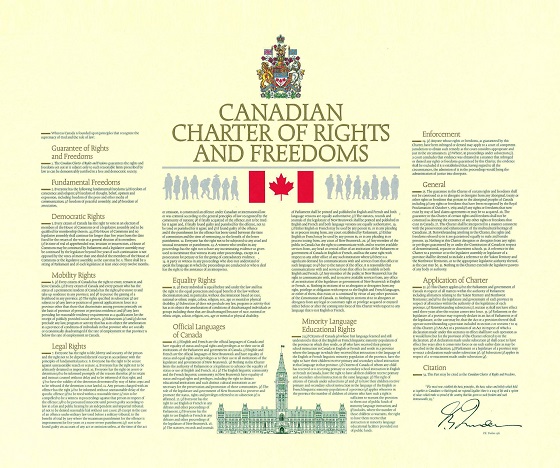Also Interesting
Edmonton Oilers – The Story of Ups and Downs

Edmonton Oilers Throughout The Years
The National Hockey League is an important part of life for most Canadians. Not only does this hockey tournament have a 100-year history of ups and downs, but it is also a true tradition in Canadian society. Hockey as a sport is a national treasure, played by children, teenagers, men, and women.
Today there are 32 North American teams playing in the NHL, 25 of which are from the United States and 7 from Canada, but only one team wins the Stanley Cup, the major award of club-level hockey. So, in this short read, we will talk about the five-time Canadian champions Edmonton Oilers, a team that has had a lot of ups and downs but has still stayed afloat.
Edmonton Oilers – The Phenomenon
The Edmonton Oilers were founded in 1972 and after 7 years they were in the National Hockey League, and then began the rise, memories of which still warm the souls of fans.
Wonderful times of amazing Canadian hockey that drew crowds of fans to their ice battles. But Edmonton Oilers fans loved not just to follow the success of their team, betting was on-trend, which further added to the emotion of watching a match of their favorite club. By the way, this option of entertainment exists to this day, and you can find the right betting site in Alberta betting sites. There you can find the most popular and real money betting sites in Canada.
The highs and the lows – Edmonton Oilers History
The history of the Edmonton Oilers hockey club is the story of a once-great club that faced personnel and financial problems but still maintained the brand.
Roaring Times
The 1983/1984 NHL season was the beginning of the Oilers’ rise to the throne of undisputed tournament leader. In seven seasons the Edmonton Oilers reached incredible heights and won the Stanley Cup five times. Even trading Wayne Gretzky in 1988, using the motivation of the undefeated leaders to win the last Stanley Cup in the 1989/1990 season, and then the decline began.
The Epoch of the Great Decline
Beginning in 1993, the Edmonton Oilers remained below the playoff line for four consecutive seasons. The club had major financial problems. Personnel decisions in 1996 with a coaching change helped finally bring the club back to the fold, but they didn’t bring the Stanley Cup home. And up until 2015, the Oilers held a reputation as a mid-tier club that reached the Finals once and lost to the Carolina Hurricanes.
Edmonton Oilers: A New Hope
Major changes to the club occurred in the 2015 offseason. The team strengthened with new layers, changed its resource management policies, and finally reached the tournament playoffs. Now it continues to fight and defend its great history, and fans continue to believe in a miracle.
Hockey Team – From Player to Player
The Canadian team of the 1980s was led by Wayne Gretzky, a Canadian hockey legend. In his first season in the NHL, Gretzky would go on to break one hockey record after another, winning the league’s best player award along the way. He was then succeeded by Marc Messier, who was able to win the Stanley Cup during the 1989/1990 season but was unable to lead the team out of the crisis.
In the dark times, it is difficult due to high turnover, it is difficult to identify the obvious leaders. But the 2005/2006 season showed us those who can play real hockey. Chris Pronger, Dwayne Roloson, and Fernando Pisani were the ones who created a miracle,
taking the team, which finished 8th in their conference, to the finals. Now we are watching Peter Chiarelli’s actions in managing the team and its resources and leader Connor McDavid. Watching and hoping that the once-great club regains its greatness.
Final Thoughts
The Edmonton Oilers are undeniably a club with an exciting history and a great cup collection. A club that has been able to overcome several crises and return to the arena of great hockey. But the most important thing is that the club has kept its fans who still believe in its victory.
Also Interesting
From Innovation Hubs to Digital Habits, How Work and Leisure Are Changing in Alberta

Things have been changing in Alberta. The province isn’t just about oil and cattle anymore. Along with the wide-open skies, there’s a growing sense of invention. Just taking a walk through Calgary or Edmonton, you can see a difference from a few years ago. You’ll see people tapping away on laptops in coffee shops and talking about new ideas.
The workplace also looks completely different compared to a few years ago. Times have changed, with people being able to work from home, coffee shops, or any remote setting. Boring old offices have changed into relaxed lounges and coffee corners, which help to inspire creativity. Instead of traditional classrooms, learners can now do a lot of their lessons online.
But it’s not all about work. How people relax and unwind has also changed. Streaming their favourite show, gaming, and online entertainment have definitely become a part of everyday life. When the weather gets too cold or the schedule becomes too busy, entertainment is just a click away.
Online gaming has grown into a favorite digital pastime. Much like the best online casinos in the country, the fun comes from having variety. Some players chase the excitement of high-stakes games, while others prefer slower, social ones that let them chat with friends. There are games to suit every style and mood. There are also great incentives to look out for, like huge welcome bonuses, free spins, and VIP and loyalty points (source: https://www.pokerstrategy.com/online-casinos/canada/). These are especially great if you play regularly.
This trend of enjoying digital downtime also connects with Alberta’s working culture. The same traits that make Albertans great at building and problem-solving also show up in how they play. Whether they’re testing a new game feature, trying out a bonus offer, or experimenting with different apps, it’s all about curiosity. This habit of trying, learning, and adjusting is shaping a generation that’s both playful and ambitious. They treat technology as a tool for creativity and connection.
You can see this mix of work and leisure in everyday life. Someone might take a break from a remote work project to stream a show and then go right back to brainstorming ideas with colleagues. The old ways of separating work and play have changed. While people work just as hard, they’re finding new ways to relax and recharge. Young professionals are creating lifestyles that value flexibility as well as personal balance.
Alberta’s economy has always been resilient, but having this new digital layer has added something new. Ideas, skills, and online habits are becoming the province’s newest source of energy.
This wave of change matters because it’s not limited to one industry or age group. It’s happening in living rooms, classrooms, and working spaces. Alberta’s people are showing that progress can begin anywhere you open a laptop or pick up a phone. Innovation is not just about inventing something new. It’s about how everyday choices include blending the digital world into the real world. Alberta still holds onto its hardworking roots, but now it’s combined that with imagination and digital confidence. This is helping to shape a future that is full of possibilities.
Also Interesting
Cryptocurrency and Online Casinos and What’s Next for Bitcoin and Ethereum Payments: Overview From Specialists at Rabona Betting

Cryptocurrencies are becoming more common in everyday transactions. You can purchase things via digital currency on different sites and the system automatically exchanges it into the fiat currency like CAD.
This payment method is also popular at online casinos because of fast transactions, specifically, withdrawals. You can deposit money and place a bet on Napoli FC Rabona Canada, play various games, and then withdraw winnings the way you deposited funds. This article explores this interesting opportunity and what may come in the future.
Why Casinos Use Cryptocurrency
Online casinos like Rabona betting use cryptocurrency because it transfers funds faster than traditional payment systems. Bitcoin and Ethereum transactions don’t rely on banks, so transfers complete within minutes.
Players from countries with financial regulations use crypto wallets to send or receive funds without card rejections or blocked transfers. Casinos also cut costs since they don’t pay high processing fees to banks or card companies.
Crypto systems record each transaction on a blockchain ledger, so every move of money is visible and cannot be changed. That reduces disputes over withdrawals and deposits since each transaction’s info is available in public records.
Casinos that accept Bitcoin or Ethereum attract a wide range of players who prefer anonymity. Traditional payment systems require full identity checks, while crypto transfers use wallet addresses.
Players still need to pass KYC checks under legal standards, but crypto wallets give more privacy since they don’t require your bank data.
How Bitcoin and Ethereum Shape Casino Payments
Bitcoin is the top choice for online gamblers because most payment systems already integrate it easily. It allows deposits and withdrawals in similar amounts to bank transfers.
Sites like Rabona betting often provide it for high-volume transactions because cryptocurrency networks handle large sums safely and quickly. Digital currencies stands out because they allow smart contracts.
These contracts handle payouts automatically when a condition is met. For example, a casino game that uses an Ethereum contract can send a payout as soon as a winning combination appears, without manual approval.
Players deposit money and the casino automatically exchanges it to CAD. Thus, users can play bets in a currency they’re used to, and withdraw via the same crypto system that converts CAD to BTC, ETH, etc.
What’s Next for Bitcoin and Ethereum in Gambling
Future development aims to increase transaction speed and reduce fees. Bitcoin developers work on the Lightning Network, which processes microtransactions instantly through off-chain channels. That system suits online casinos since it handles many small bets quickly.
Ethereum’s developers improve scalability through updates that raise network capacity and lower gas costs. That’s one of the reasons why Ethereum switched from PoW to PoS.
Conclusion
Casinos like Rabona betting and others keep expanding payments to include more currencies like Solana, Cardano, Avalanche, or stablecoins like USDC, EURC, EURQ, and more. Most cryptocurrencies process transactions faster and provide some sort of anonymity, so players will continue using them at online casinos.
-

 Alberta2 days ago
Alberta2 days agoSchool defunding petition in Alberta is a warning to parents
-

 Agriculture2 days ago
Agriculture2 days agoBovaer Backlash Update: Danish Farmers Get Green Light to Opt Out as UK Arla Trial Abruptly Ends!
-

 International1 day ago
International1 day agoBBC boss quits amid scandal over edited Trump footage
-

 Daily Caller1 day ago
Daily Caller1 day agoMcKinsey outlook for 2025 sharply adjusts prior projections, predicting fossil fuels will dominate well after 2050
-

 Agriculture1 day ago
Agriculture1 day agoFarmers Take The Hit While Biofuel Companies Cash In
-

 Business22 hours ago
Business22 hours agoCarney’s Floor-Crossing Campaign. A Media-Staged Bid for Majority Rule That Erodes Democracy While Beijing Hovers
-

 Frontier Centre for Public Policy1 day ago
Frontier Centre for Public Policy1 day agoNotwithstanding Clause Is Democracy’s Last Line Of Defence
-

 Business1 day ago
Business1 day agoCarney government needs stronger ‘fiscal anchors’ and greater accountability







